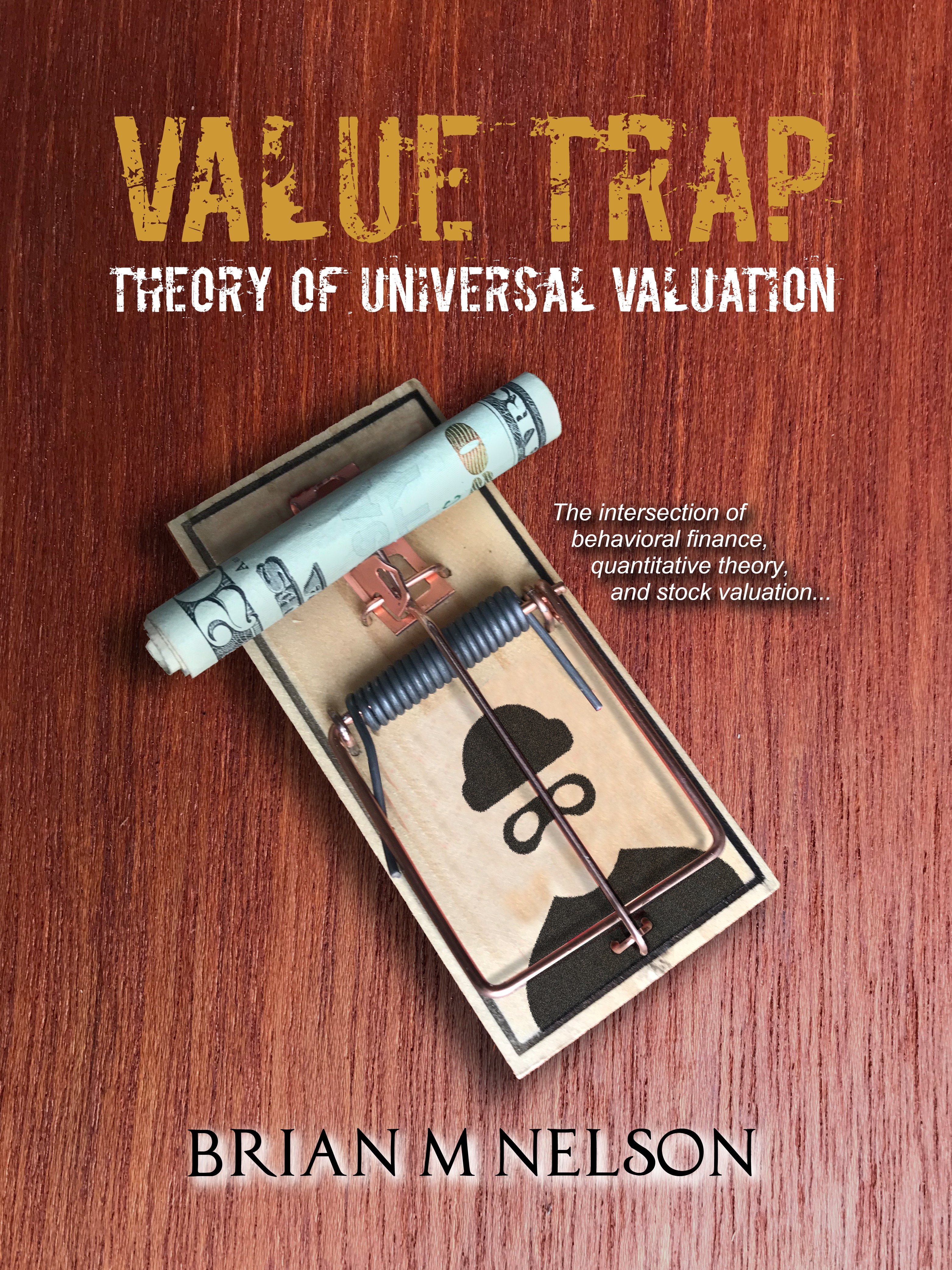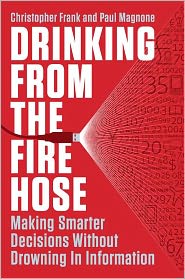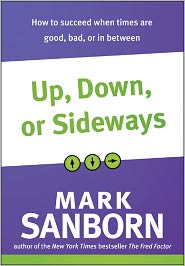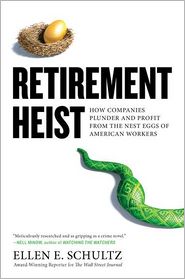Books
There are many books on business and investing published each year. Make sure to check out Valuentum's discussion forum to make your recommendations on the best new business books. Thank you for visiting!
--------------------------------------------------
PRAISE FOR VALUE TRAP: THEORY OF UNIVERSAL VALUATION
It's Here! Click Image Below to Order Digital Copy!
--------------------------------------------------
Flash Boys: A Wall Street Revolt
By Michael Lewis. W. W. Norton & Company, 2014. 274 p. ISBN 978-0-393-24466-3.
Michael Lewis’s (author of Liar’s Poker, The Big Short, and Moneyball) most recent work, Flash Boys: A Wall Street Revolt, has created quite a splash. The book itself focuses on what a millisecond means in the stock market. In light of high-frequency trading (HFT) and the loopholes in current government regulation, those milliseconds mean a lot. HFT firms have been able to take advantage of speed to know what trades are coming before they hit the market (or at least all of the markets as orders reach some exchanges faster than others). One of the central characters in the book, Brad Katsuyama, formerly of RBC and now the CEO of IEX Group, explores some of the inconsistencies he sees in what displays on his computer screen, versus what actually happens when he hits “buy.” This obsession to find the truth leads him to ultimately leave RBC and set up a new exchange, IEX, which is currently registered as an Alternative Trading System, not to exploit those milliseconds, but to bring equality back to the market.
According to Lewis’s research, it was actually an SEC regulation, Regulation National Market System or Reg NMS, that made this kind of front-running possible. This regulation “required brokers to find the best market prices for the investors they represented.” This in turn required brokers to buy up all the shares offered at one price before moving to another exchange and the additional routing to more exchanges opened up the door for high-frequency traders to pick up on large orders, allowing them to buy up shares more cheaply on the other exchanges before the original order came through. So, while Reg NMS was created to create equality, it actually created more inequality. Looking at the history of these regulations, however, Reg NMS was created to correct another loophole that appeared after previous regulations went into effect, and those regulations were meant to correct previous loopholes.
The issues revealed by Lewis’s work were not unknown. It seems that many in the industry, as well as those charged with oversight, including the FBI, SEC, and the New York Attorney General were aware of the role of high-frequency trading in the market and have already begun investigations. If the pattern alluded to in Flash Boys is any indication, one possible outcome is additional regulation to plug the loophole that has been exploited by HFT firms, and possibly some hefty fines.
Overall, this is another fine example of Lewis’s work. His narrative follows the story of a core group of people, making it easier to read and easier to understand. Even though there is some complexity in what happens behind the scenes in the markets, Lewis writes this book for the general reader, and it is thoroughly enjoyable.
--------------------------------------------------

By Michael J. Mauboussin. Harvard Business Review Press, 2012. 293 p. ISBN 978-1-4221-8423-3.
Mauboussin (Managing Director and Head of Global Financial Strategies at Credit Suisse; formerly Chief Investment Strategist at Legg Mason Capital Management) tackles the thorny problem of untangling skill from luck. His goal is to help the reader determine the difference between the two and also look at the relative importance of each. Mauboussin uses examples from sports to make the concepts more understandable, and then places them in the context of investing. He posits that once the luck-skill continuum is understood, better decisions are bound to follow. The combination of math, science, psychology, and humor makes this an enjoyable read.
Valuentum’s Take: While this is a very entertaining look at luck and skill, it is more in the style of Freakonomics and Outliers than a pure investment book. Those looking for more insight from Mauboussin may prefer his guide to investing, More Than You Know: Finding Financial Wisdom in Unconventional Places.
--------------------------------------------------
I
By Robert G. Hagstrom. Columbia Business School Publishing, 2013. 208 p. ISBN 978-0-231-16010-0.
Book Release Date: January 2013
Robert Hagstrom (Senior Vice President and Portfolio Manager of Legg Mason Capital Management and best-selling author), revises and expands his thoughts on using a variety of disciplines to better understand investing. Expanding on the work of Charlie Munger and his thoughts on the “latticework of mental models,” Hagstrom examines a variety of diverse fields, from physics and biology to philosophy and literature, to pull out key takeaways that can be used to better understand the markets. The current model of financial education is to focus on finance, accounting, and economics to develop a deep, specialized understanding. But, building on the premise that finance is not an exact science, Hagstrom recommends taking a step back and looking at a broader range of disciplines to discover the basic truths that can be applied back to investing.
Valuentum’s Take: Investing won’t teach you how to invest or recommend any particular investment style. What it will do is make you think about the market as a system, because as Hagstrom says, “that’s the power of a latticework of mental models…it leads to understanding the full range of market forces – new businesses and trends, emerging markets, the flow of money, international shifts, the economy in general, and the actions of people in markets.” The core principles Hagstrom presents are not new ideas—the idea of equilibrium from physics, evolution and change from biology, and complexity theory from sociology—but his goal is to encourage the reader to think more broadly about investing and consider all the different influences on how people and markets act and react. Not only perfect for those looking to find a new way of “putting the pieces together” when making investment decisions, but also for Valuentum investors that approach the market from a variety of different disciplines in order to uncover the best investment ideas.
--------------------------------------------------
White House Bu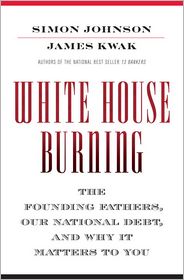
By Simon Johnson and James Kwak. Pantheon Books, 2012. 368 p. ISBN 978-0-307-90696-0.
Simon Johnson (professor of entrepreneurship at Sloan School of Management) and James Kwak (associate professor at the University of Connecticut School of Law) team up again following their best-seller 13 Bankers. In White House Burning they tackle the issue of the National Debt, beginning with Alexander Hamilton and the founding of the United States. Johnson and Kwak focus their attention on fiscal responsibility and explain the parallels and differences between government finances/debt and personal finances/debt. The last section of the book includes their recommendations for reducing and controlling the national debt, with ideas ranging from letting tax cuts expire and maintaining the current system for social security, to increasing taxes for social programs and reducing subsidies. To them, “the bottom line is that our long term budget problems can be solved without gutting our major social insurance programs or our modest safety net.”
Valuentum’s Take: White House Burning provides a crash course in understanding the debt of the United States and how it evolved over time, complete with definitions and explanations of the key concepts discussed. A plethora of charts and graphs visually demonstrate the points the authors make. While the authors’ politics shine through in many parts of their analysis, the history of the debt and the impact of wars, taxes, and interest provide a background for understanding the current state of the national debt.
--------------------------------------------------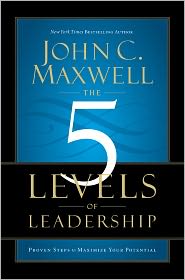
By John C. Maxwell. Center Street, 2011. 304 p. ISBN 978-1-5999-5365-6.
Book Release Date: October 4, 2011
Maxwell (leadership expert and New York Times bestselling author) further explores his leadership principles in this latest book. Maxwell’s belief is that leadership is about influence, and that “if people can increase their influence with others, they can lead more effectively.” Taking this into consideration, Maxwell has delineated between five separate levels of leadership: position, permission, production, people development, and the pinnacle. Each level requires adaptation and development to build on the previous levels. While a leadership position is all that is required for the first level, the remaining four levels require building trust with those you want to follow you, generating results, and finally, developing other leaders. Each section of the book is devoted to one of the levels and discusses the upside, downside, and the laws of leadership that best apply to each level (from The 21 Irrefutable Laws of Leadership).
Valuentum’s Take: Maxwell strives to provide a practical guide to leadership rather than a theoretical view and presents the principles he has found to be effective in organizations of all sizes. To this end, the book begins with a four part leadership assessment for readers to determine which level of leadership they have currently achieved. While this is written as a stand-alone volume, the frequent references to Maxwell’s other books would make a familiarity with them valuable.
--------------------------------------------------
Drinking from the Fire Hose: Making Smarter Decisions without Drowning in Information
By Christopher J. Frank and Paul Magnone. Portfolio, 2011. 256 p. ISBN 978-1-5918-4426-6.
Book Release Date: September 1, 2011
Frank (vice-president of business-to-business and communications research at American Express) and Magnone (director of global business development and alliances at Openet) offer their take on the information overload facing organizations, and suggest that with a few simple questions it is possible to sort through the flood of data and focus on the most important information, that information which leads to better decisions in less time. The authors present seven “Fire Hose questions” ranging from “who are your swing voters?” to “should you believe the squiggly line?” The most important of these questions however, are the first two, “what is the essential business question?” and “where is your customer’s north star?” By keeping the focus on the customer’s needs instead of the organization’s pocketbook and by determining the one essential piece of information needed to move forward, organizations can sort through the meaningless data by “asking the right questions at the right time.”
Valuentum’s Take: The introduction presents the seven questions that are the focus of the remainder of the book. Each chapter tackles one of the questions, how to apply it, and provides practical application through case studies and exercises. The introduction does an adequate job of explaining the questions and the importance of sorting out the data that just measures from data and information that leads to real insights and enables decision making. The subsequent chapters get a little repetitive as the authors repeat what has already been covered, but the case studies of well-known companies like IBM, Microsoft, Starbucks, and Zappo’s will add value for readers.
--------------------------------------------------
Up, Down, or Sideways: What You Must Always Do to Succeed When Times Are Good, Bad, or in Between
By Mark Sanborn. Tyndale House Publishers, 2011. 170 p. ISBN 978-1-4143-6221-2.
Book Release Date: October 1, 2011
Sanborn (president of Sanborn & Associates, leadership speaker, and best-selling author of The Fred Factor) shares his take on how to succeed no matter what circumstances you find yourself in. Sanborn starts the book by sharing his own story of how he experienced a downturn in business, investments, and health at the same time. The outcome of that experience is this book, which is a collection of principles around the things that we “should” do. While there are many barriers to success, Sanborn posits that if you follow these practices - which include defining success for yourself, having an optimistic outlook, and creating value - that puts you in a position to be successful.
Valuentum’s Take: This quick read presents commonsense advice on the things most people already know they “should” be doing, but is a good reminder nonetheless. While much of his advice is centered around his own experiences, his message is a good one – even if you do everything you should, “that doesn’t mean everything has or will work out perfectly for you, but that you are the kind of person whose values and persistently applied practices put you in a position to succeed.”
--------------------------------------------------
Retirement Heist: How Companies Plunder and Profit from the Nest Eggs of American Workers
By Ellen Schultz. Portfolio Hardcover, 2011. 256 p. ISBN 978-1-5918-4333-7.
Book Release Date: September 15, 2011
The demise of pension funds and other retiree benefits has been blamed in recent years on a “perfect storm” of rising costs, accelerating retirements, and the global economic crisis. However, Schultz (investigative reporter for the Wall Street Journal) provides a scathing exposé that reveals the tactics companies have used to take advantage of loopholes in the law regarding the funding and disbursement of pension funds, using this money for everything from paying creditors and providing health benefits to funding restructuring and executive compensation. Schultz shows how plush pension funds have proven to be too great of a temptation for many companies, leading to the cycle where “[pension fund] cuts generate gains, which get added to profit, which lifts earnings, which helps the stock price, which boosts the compensation of the executives, whose pay is based on performance.”
Valuentum’s Take: Schultz has an engaging style that makes this a fast read. A plethora of examples from well-known organizations, from the NFL to airlines, automakers, and banks, show how widespread the problem is. While this is a fascinating exploration of what happens when companies, that in the past had ample resources, create and exploit loopholes in order to “raid the piggybank,” it will provide little consolation to those workers who have found themselves on the other side of this equation.
--------------------------------------------------
The Vigilant Investor: a Former SEC Enforcer Reveals How to Fraud-Proof Your Investments
By Pat Huddleston. AMACOM, 2011. 256 p. ISBN 978-0-8144-1750-8.
Book Release Date: October 25, 2011
With the misdeeds of Bernie Madoff still fresh in our minds, this humorous yet insightful look at how to protect yourself from scams and con men is sure to be a hit. Divided into two parts, part 1 covers all aspects of investment fraud, while part 2 focuses specifically on the US securities industry. Huddleston (CEO of Investor’s Watchdog and former SEC Enforcer) provides examples of fraud followed by “Due Diligence for the Vigilant” at the end of each chapter, which is where he shares tips and strategies including doing your homework before investing, checking the credentials of your advisor, and really understanding how money is made in the investment instead of being blinded by fancy financial jargon. As Huddleston says, “if your investment advisor spends money like a trust fund baby on a weekend shopping bender, he is spending your money, not his own” and that is reason enough to be vigilant.
Valuentum’s Take: This book should be required reading for investors. According to Huddleston, “the FBI estimates that Americans lose $40 billion annually to investment fraud.” The SEC does not have the manpower to catch all of these criminals, nor does it have the authority to punish them. The investor has to find a way to look beyond the easy answers and do their own due diligence – which can save them and countless others from losing their savings.
--------------------------------------------------

By Twila Slesnick and John Suttle. NOLO, 2011. 390 p. ISBN 978-1-4133-1393-2.
Book Release Date: July 6, 2011
In the 10th edition of this NOLO guide, Slesnick (an Enrolled Agent who specializes in tax and investment planning) and Suttle (attorney and CPA) attempt to break down this complicated process into understandable pieces, complete with the legal and tax implications. Each chapter begins with an explanation of who should read the chapter and who would be better served by skipping ahead. The written descriptions and examples in each section are accompanied by sidebars that highlight important terminology or key tax codes referred to in the chapter. Also interspersed in the chapters are sample tax forms related to specific examples that illustrate how different situations should be handled at tax time to avoid penalties. Appendices include IRS forms, notices, and schedules, as well as life expectancy tables that will be an indispensible resource for those using the book to make decisions about retirement planning and distributions.
Valuentum’s Take: This book is for you if you’re ready to take money out of your retirement accounts. It is a no-nonsense guide to demystifying retirement plans, how and when to take distributions from your accounts – not too early and not too late – and what the tax implications of those distributions are.
--------------------------------------------------
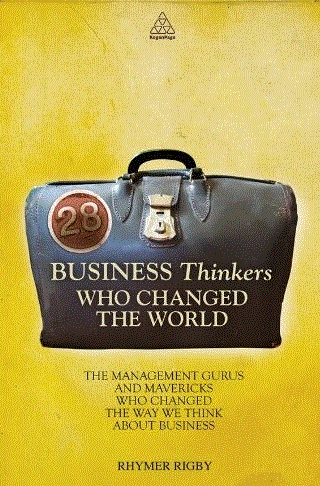 28 Business Thinkers Who Changed the World: the Management Gurus and Mavericks Who Changed the Way We Think about Business
28 Business Thinkers Who Changed the World: the Management Gurus and Mavericks Who Changed the Way We Think about Business
By Rhymer Rigby. Kogan Page, 2011. 232 p. ISBN 978-0-7494-6239-0.
Book Release Date: June 28, 2011
British journalist Rhymer Rigby tackles the lives of the most influential business thinkers in his latest work. Rigby (freelance journalist and contributor for the Financial Times) takes a journalistic approach, reporting on the lives and businesses of these 28 gurus without offering additional analysis. Each of the 28 chapters is devoted to a different business thinker, ranging from the more traditional, including Peter Drucker and Jack Welch, to the more modern and technologically focused, such as Mark Zuckerberg and the Google duo of Larry Page and Sergey Brin. Rigby claims there are no particular attributes that will determine success, as demonstrated by the wide range of business people profiled, and says that the “secret of someone’s success is that there is no secret.” Therefore he focuses these short chapters, less than ten pages each, on the background of these business thinkers and attempts to show what these people have done differently that enabled them to succeed. (Image Source: Amazon).
Valuentum’s Take: This promising title falls short in its execution. The final result is a compilation of short bios on the background and careers of some of the biggest influences on today’s business world. Rigby, while he does write a business column, also does freelance writing on travel and lifestyle, so he isn’t an expert on business per se. Where he does succeed, however, is in his balanced coverage and the fact that he doesn’t gloss over the negative qualities of these people while extolling their virtues.
--------------------------------------------------
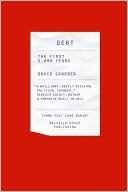
By David Graeber. Melville House Publishing, 2011.
544 p. $32.00, ISBN 978-1-933633-86-2.
Book Release Date: July 12, 2011
Graeber (Reader in the Department of Anthropology at Goldsmiths, University of London) takes a multi-pronged approach to exploring debt, looking at both the moral and economic underpinnings of debt as well as providing anthropological evidence of the long history of debt and credit. He refutes the generally accepted history of money, which posits that barter systems led to coins, which eventually led to the need for credit. Instead, Graeber presents a history where credit existed long before coins or cash and shows how societies have adapted either system, one based on credit or one based on bullion, to fit their needs. In addition to the passages providing examples from societies around the world, Graeber also weaves in discussions of economic theory and how this still affects us today. While he argues that the idea of barter promulgated in such works as The Wealth of Nations never existed, the work of others, including Mitchell-Innes, may be more on target.
Valuentum’s Take: This book is for you if you’d like to read about how culture and economics are intertwined. This book is a blend of history, economics, and anthropology, with chapters that focus on each aspect. The final four chapters present Graeber’s take on the history of debt, from 800 BC to the present.
--------------------------------------------------
Investment Classics
If you haven't already, be sure to take a read of the following highly-recommended investment classics:
Beating the Street, Peter Lynch
Valuation, 5th Edition, McKinsey & Co.
A Random Walk Down Wall Street, Burton G. Malkiel
Little Book That Builds Wealth, Pat Dorsey
Stocks for the Long Run, Jeremy Siegel
Competitive Strategy, Michael Porter
The Intelligent Investor, Benjamin Graham
--------------------------------------------------
Also, be sure to visit Valuentum's forum, where you can read about other books Valuentum subscribers recommend and why.
